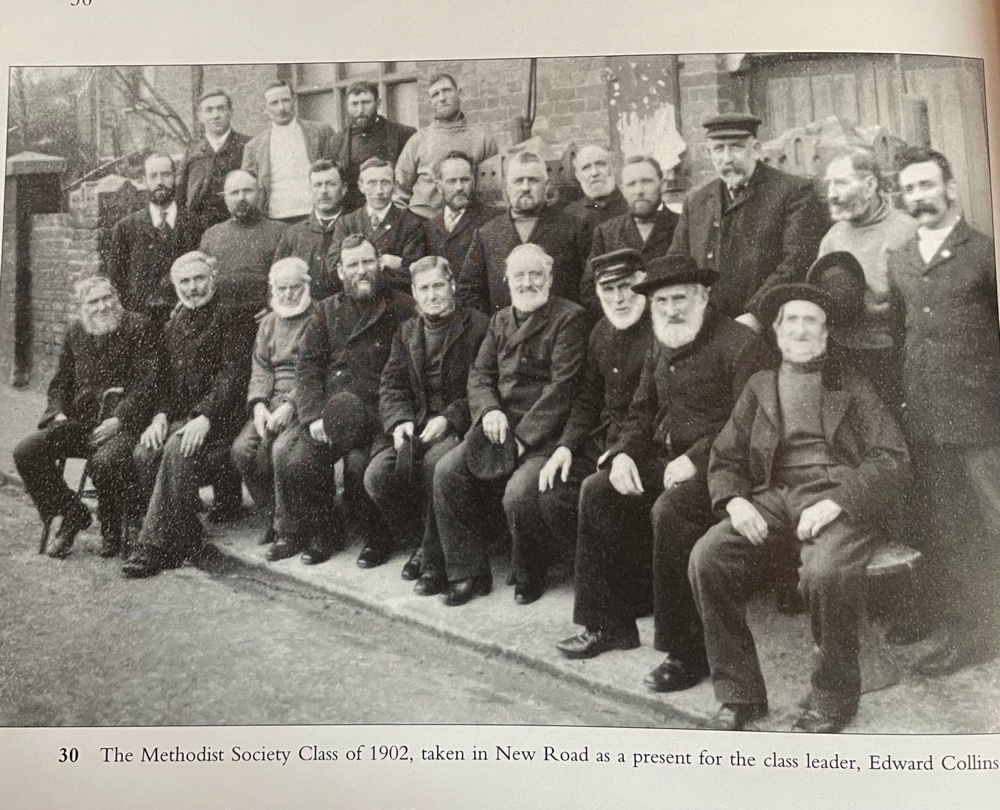
A booklet, 'The history of the Methodist Church in the Southend and Leigh circuit - New Road', written by George Thompson Brake in 1995, can be downloaded here: New Road - George Thompson Brake. (PDF document 1.9mb)
The story of New Road Methodist Church, Leigh-on-Sea
The text below has been taken from a shorter leaflet, written by Kathy McCullough. The leaflet itself is reproduced below.
The story has been passed down that in 1748 two or three Leigh boats were forced by a channel storm to take refuge in Shoreham harbour. The fishermen slept in their boats and were awakened by beautiful singing.
They found that it came from people sitting on the harbour wall enjoying an open-air service. John Wesley was the preacher. The Leigh fishermen were so impressed that they asked him to visit their town, which he promised to do.
John Wesley's first visit was on November 21st 1748. In all, Wesley records nine visits to Leigh, during the following ten years. On his first visit he writes: "Here was once a deep harbour; but the sands have long since blocked it up; and reduced a once flourishing town to a small ruinous village".
He preached to "most of the inhabitants of the place in the evening and many in the morning' A year later when he visited he wrote: "I left the little flock in peace and love" and in 1750 he wrote: "| rode to Leigh in Essex where I found a little company seeking God".
No doubt the early followers met in homes and out of doors. It was 1811 when they acquired a small site at the end of Hadleigh Road. Here the first chapel was built.
However in 1854 they received notice from the Railway Company that they were taking over their site to make way for the new railway line. With the compensation they were given, another chapel was built in 1861, south of the railway line facing the High Street.
It was only 18 years later that a serious structural problem was revealed, probably because of the proximity of the railway.
Repairs would have been so expensive that it was decided to rebuild the church on a new site in New Road. By 1929 this building was also in a serious condition, with fear of the foundations moving. So in 1932 this building had to be rebuilt at a cost of nearly £3000. This is the building we see today.
The Rev Whitham writes: I remember the fishermen I came in contact with years ago in Leigh-on-Sea. They were old men with no scholarship. They told me of their thoughts; the things they said within themselves as they sailed with the stars and the wild waters about and beneath them. For sheer poetry I have never heard more beautiful things than fell from the lips of those unlettered men. It was the poetry of the Grace of God.
Over the years the church has served the community in many ways. At the beginning of the Second World War in 1939 the children of the area were evacuated. There was no school for the remaining children so the church schoolroom became their class room until their teacher was called up, and the local school opened again. At the time of the terrible floods in 1953 the rescued people from Canvey Island were brought to the church. They were fed and given dry clothes and later cared for in the homes of the church people.
Numerous homes and four church buildings have been used for worship by Methodists in Old Leigh, yet it can be regarded as the "Mother Church" of Methodism in the area. The Society itself emerged directly from John Wesley's visit and the first chapel enshrined the tradition of prayer and preaching out of which new Societies were formed. The preachers were all fishermen who went out from Old Leigh to preach in their blue jerseys, walking miles on Sundays to take the Gospel to outlying villages such as Rayleigh, Rochford, Hadleigh, Canvey Island. Some walked as far as Maldon.
When the most recent building was erected the Trustees were made up of seven fishermen, two butchers, a baker, a boat builder, a decorator, a printer, a civil engineer and a roundsman. Today the congregation and their occupations may have changed, but the church is still known as the Fishermen's Church and the same Gospel is proclaimed week by week.
Join us on Sundays at the Fishermen's Chapel.




